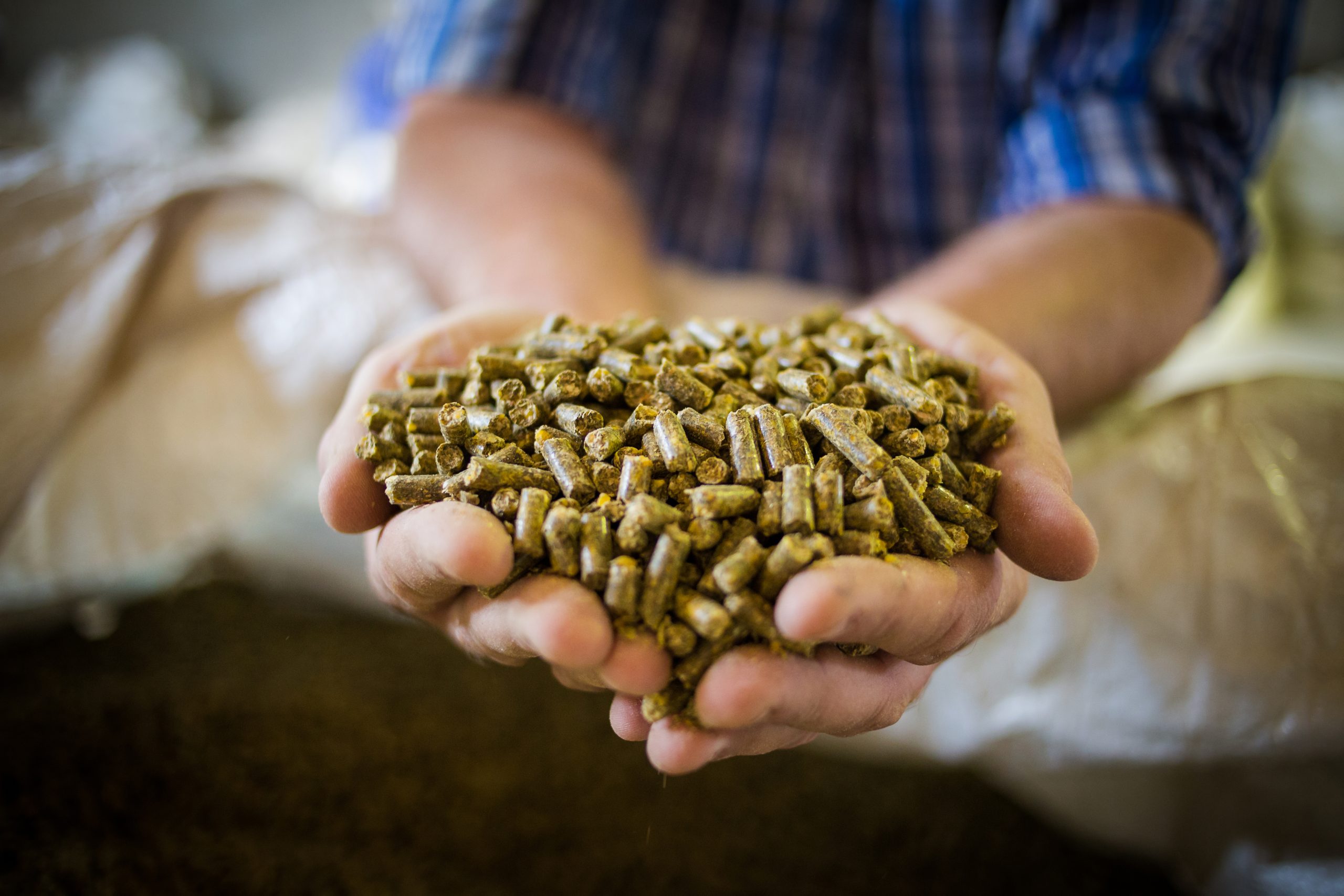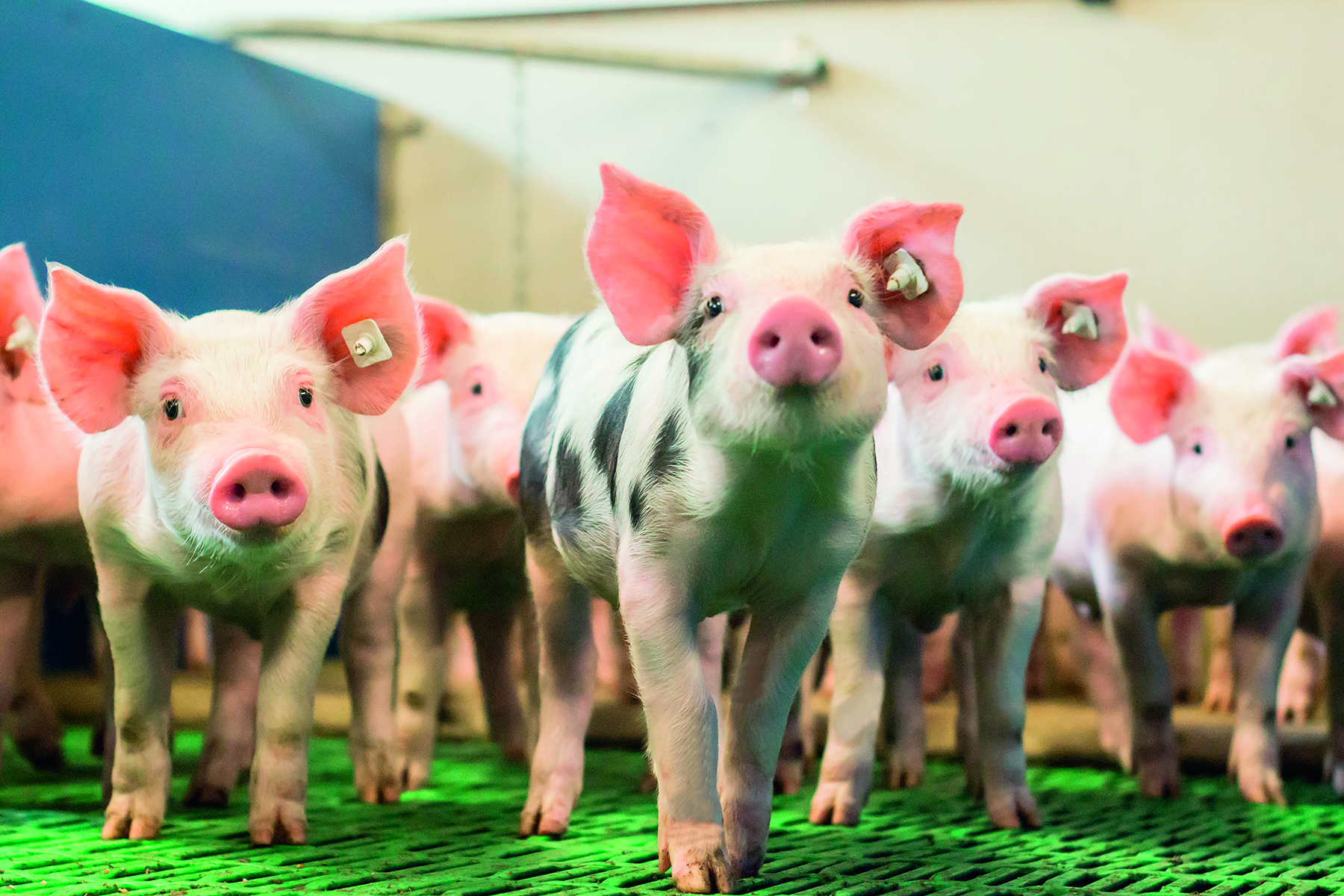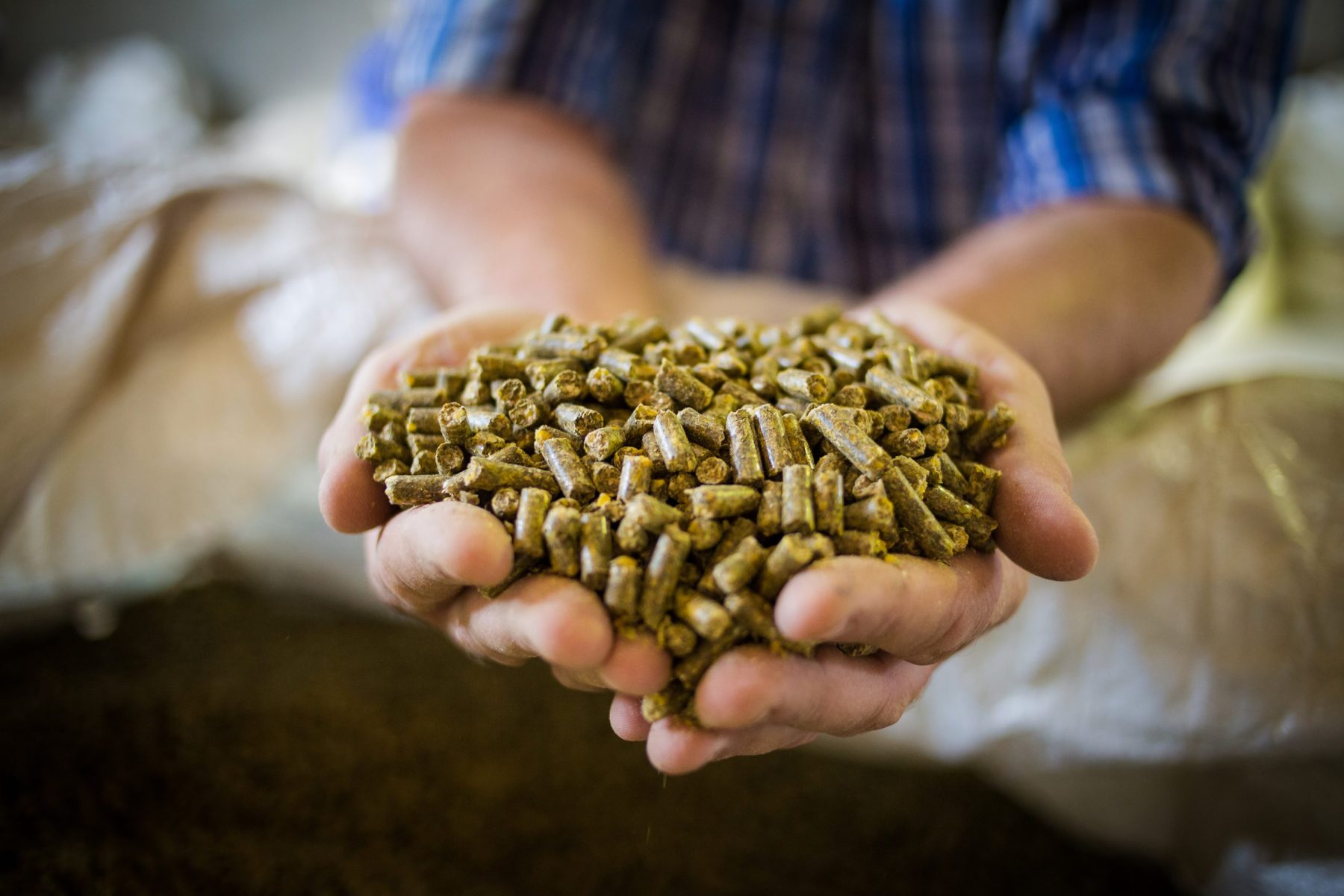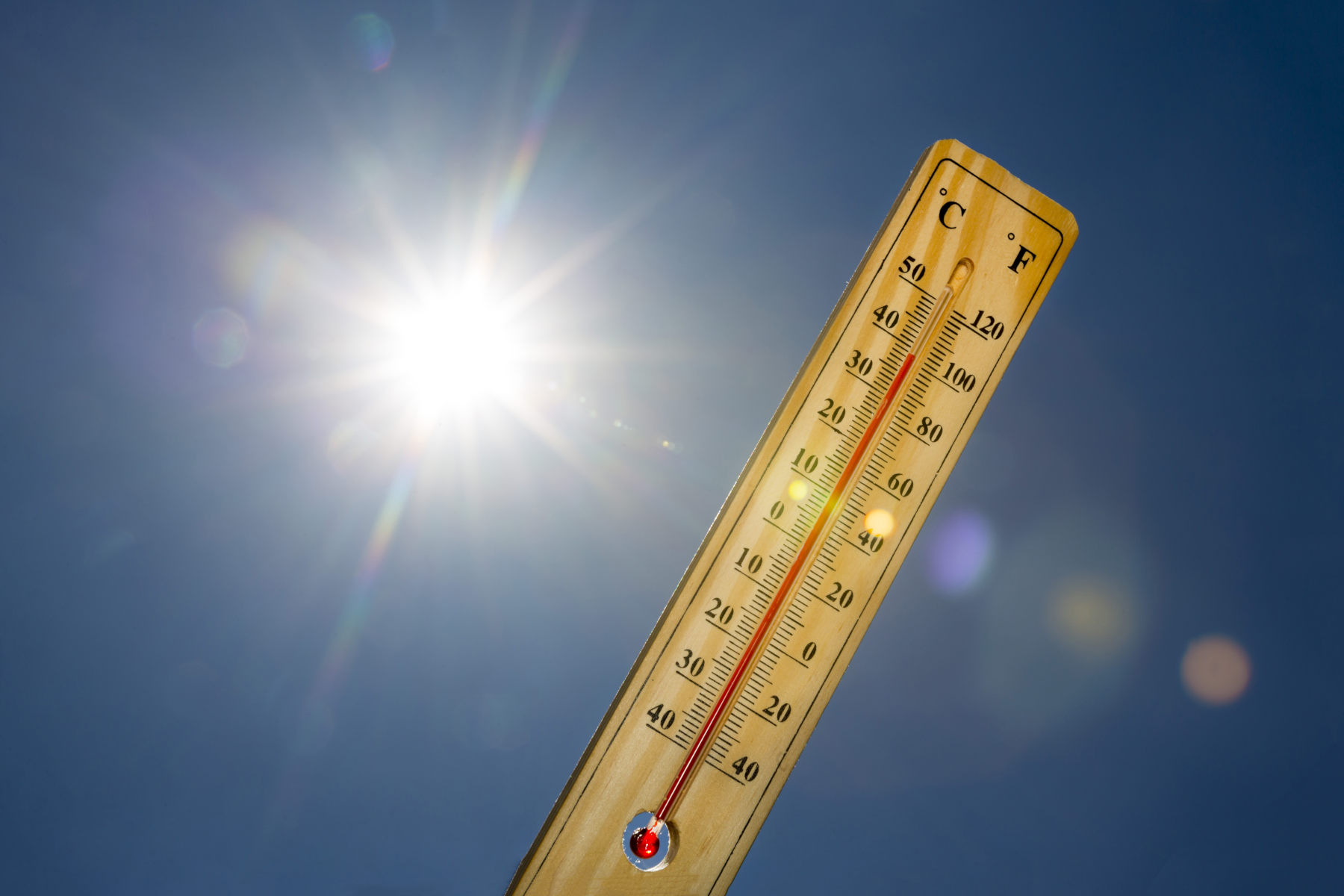

Be it poultry, beef, pork, fish or shellfish, one of the major challenges of modern animal husbandry across the globe is the sustainable, efficient improvement of animal welfare. This term refers to a number of factors that indicate improvement in animal welfare, including barn climate, behaviour, health and hygiene. These are broadly based on the Five Freedoms developed by the UK Farm Animal Welfare Council: 1. Freedom from hunger and thirst; 2. Freedom from discomfort; 3. Freedom from pain, injury and disease; 4. Freedom to express normal behaviour; 5. Freedom from fear and distress. All these factors are closely related to a very important aspect of animal husbandry: feeding.
Feed additives can achieve a lot
Needs-based feeding is one of the main prerequisites for animal-friendly husbandry and healthy animals. Feed additives in particular can have a positive impact on critical animal welfare indicators. It is precisely here that plant-based feed additives, specially developed to sustainably improve animal welfare and support the implementation of various animal welfare measures, can help. Just like the tailor-made products of industry pioneer Dr Eckel Animal Nutrition.
In this way, producers can already target the well-being and health of the animals at the feeding stage. Phytogenic additives for instance support the animal’s own immune system or gastrointestinal health. This is not only beneficial to food intake, it also improves faeces consistency and consequently litter quality, barn hygiene and footpad health. Other plant extracts have a calming effect on stressed animals, reducing stress-related behaviour such as tail biting and feather pecking. Essential oils promote lung function. Ultimately, this can reduce the use of medication, particularly antibiotics. Feed additives make animals stronger, help increase their vitality and enhance their well-being. This enables them to cope better with the daily challenges of life.
Animal welfare pays off—for all
Such product solutions demonstrate that an animal-friendly, sustainable and profitable production is possible. Feed manufacturers acquire high-quality additives that meet the special requirements of modern feeding strategies. This enables them to provide their customers with effective solutions for improving animal welfare. Producers, breeders and farmers benefit from their animals’ stronger general condition and better performance. The result: increased efficiency and sustainability. And the animals themselves present fewer stress-related symptoms, fewer inflammations, a better immune system, and improvement in their well-being. That is how animal welfare starts with the feed.

Since June 2022, the medicinal use of zinc oxide has been banned in the EU. What is the impact on animal nutrition, especially on health and welfare of piglets? For decades and especially since the world-wide ban of antibiotics growth promoters had begun, zinc oxide at pharmacological dosages has been widely in use to effectively control diarrhoea in post-weaning piglets. But much like AGP, zinc oxide is a double-edged sword. It promotes the selection of antimicrobial resistant pathogens like E. coli in the intestine and is a co-factor in the development of resistance in Gram positive bacteria. Since there is also concern about possible contamination of the environment, the use in therapeutic dosages has been under scrutiny in several countries, not only in the EU. The decision to ban zinc oxide from piglet feed has long been taken, yet the search for effective alternative control measures is still ongoing. With the ban finally in place, concerns are growing that post-weaning diarrhoea in piglets will increase.
The truth is that there is no miracle drug to simply replace medicinal zinc oxide in the diets of weaning pigs. However, this does not mean that there is no alternative. In fact, it may even turn out to be a better solution for all concerned in the end. Since nutrition plays a key role in keeping the piglets healthy, the early feed intake of piglets is of utmost importance..
Organic acids have long been established as one of the most successful groups of feed additives in piglet nutrition. Since they are able to reduce gastric pH and lower the acid binding capacity of the feed, they support a proper protein digestion in young animals, have a direct antimicrobial effect, reduce coliform bacteria in the intestine and lower the incidence of diarrhoea. Therefore, it makes sense not only from an economic point of view to use effective feed acidifiers to prevent diarrhoea.
The second option looks even more promising on the whole: Phytogenic formulations offer very promising solutions for the challenges faced in modern animal production. For instance, they contain plant metabolites to improve health and performance of weaned piglets. Modes of action include alleviating stress-related problems, reducing inflammation, supporting the immune system and improving feed intake.
Post-weaning diarrhoea still is one of the major welfare concerns in pig production. Antibiotics and pharmacological levels of zinc oxide used to be the most effective way to prevent PWD. There is a chance that the ban of pharmacological zinc oxide will lead to an increase in antibiotic use for necessary treatment of nursery pigs. However, one thing is certain: We should use all known tools in the management box to optimise pre- and post-weaning management. This is our best option to mitigate the negative impact on health and welfare of young piglets and to improve overall profitability of the operation in a sustainable way.

Currently, feed costs account for about 65 to 75 per cent of animal production costs. Chances are that this will not change for the better in the near future. Supply chains have been under great pressure, and we have seen a dramatic rise in costs for many raw materials and additives. This begs the question: Is there some way in which we can apportion the considerable price increases to farmers, food retailers and end consumers?
There may be the risk that feed quality will suffer as a result of these developments. A case in point would be the use of fewer mould inhibitors or acidifiers due to price pressures. Here, we can clearly see that the use of certain feed additives that affect performance — enzymes, acidifiers (our CaPlus range) and phytogenics (Anta®Phyt) — can actually be more profitable than doing without them under the current conditions. For example, we can save on feed if the same amount of animal protein can be produced with less feed.
Apart from this, the increase in the cost of raw materials naturally has an impact on the profitability of the feed industry. There are concerns that consolidation of the industry and the decline in profitability will have a negative impact on the industry’s capacity for innovation.
Animal welfare will remain the key driver of innovation in the feed industry and anything related to livestock production and aquaculture. Consumer demand for products that are produced in a more sustainable, healthy and animal-friendly manner continues growing unabated and will continue to shape our industry. Sometimes animal welfare is considered a kind of dirty word in our industry. But we cannot avoid offering appropriate solutions to our customers (food retailers and their customers). In the case of poultry, for example, the trend is shifting increasingly to local breeds, so-called »native chicken«. Consumers in many parts of the world are demanding that antibiotics be reduced to the absolutely indispensable. And their expectations also have an impact on the method of production: farmers have to invest in new barns, find alternatives for interventions such as docking or castration without anaesthesia, and better strengthen their animals against stress through the application of stress-reducing additives such as MagPhyt, for instance.
One thing is certain: With the aftermath of the pandemic, challenges in logistics and raw material supply, and prices still rising, not only our industry is going through challenging times. We will only master them successfully if we do not lose sight of one thing: Animal welfare starts with feed.

What do we need to work on as a society to make real progress on these important issues? First of all, we have to learn and to accept that good quality comes at a price. When it comes to nutrition, we need to distance ourselves from the mentality that cheap is chic, because ultimately it is the consumer in the supermarket who decides what the farmer produces. In Germany, food is not valued as highly as in Italy or France, for example, where consumers have always been willing to pay that much more money for produce from a certain type of animal production. But we have already started learning.
It is also important that farmers have the opportunity to earn money. Livestock farmers would happily do more for animal welfare if it is not at their own expense, since there’s not much left at the end of the day.
If we decide that food should remain inexpensive – and this could of course be a socio-politically conscious decision – , then we need to consider what farmers are being paid for: If not for the food, is it perhaps for environmental land management? And we need to decide whether we want to produce food here locally or would rather import it. What is the use of setting high standards for environmental protection and animal production here and then importing cheap products from countries with lower standards and rampant pollution? This is about responsibility. And the coronavirus pandemic has just shown us that world markets too can stagnate.
In a recent article entitled ‘EU becomes less significant’, the author used the greening of agriculture to justify their view. This may be true for raw materials, but with regard to our sector, it is quite different. For us, greening means taking on the role of a global pioneer. Yes, less meat will be consumed. We need to adapt and work on solutions to tackle the changes that are coming.

First, there is the traditional approach of optimising the feed supply, because a well-nourished animal is healthier and more stable. Beyond that, there are plenty of other options. I like to compare this to the human sphere. What do people do when they are stressed or experience stomach discomfort? They may drink a chamomile tea. Such tried-and-tested natural active ingredients could also help our animals. In the case of humans, we have also recently discovered that a distressed digestive system affects the whole person and increases a person’s susceptibility to depression, due to what we call the gut–brain axis. This confirms how important nutrition is for well-being and health.
Animals too often demonstrate changed eating behaviour when they are unwell. Stress, which can be caused by high temperatures or pregnancy, among other things, often leads to stomach and digestive problems, and negatively affects the gut microflora. We can promote both digestion and the well-being of animals by adding herbal active ingredients to their feed, thus ensuring a healthy stomach. In addition to plant additives—phytogens—it is now standard practice to use probiotics and prebiotics in animal feed, for example.
Probiotics are live microorganisms such as lactic acid bacteria or yeasts that have a positive effect on digestion. They foster a good gut microflora and protect against dangerous germs.
Prebiotics are indigestible food components, that is, dietary fibres such as oligosaccharides, found in cereals, fruits and vegetables. They provide the ‘food’ that the ‘good bacteria’ in the digestive system need to live, and induce the formation of these good bacteria.
The current trend is to value the animal as an individual, rather than part of a group. Large corporations are already investing in digital animal production. This means, for example, that sick animals can be identified at an early stage, cared for individually and fed specifically to improve their well-being.

Some regions of the world have a surplus of protein while others have a deficiency. Around nine per cent of the world’s population still experiences hunger. That is around 700 million people. This figure is expected to grow by another 60 million in the next five years. Our goal must be to counteract this. In order to do this, we need a sensible mix of protein sources: plant protein, meat substitutes, cultured meat and animal protein such as that found in meat, egg and milk. The decisive factor is production: food that is not produced sustainably has no future.
We are aware that consumer behaviour vis-à-vis animal protein will change: high-quality products will have greater value. In most developed countries, previous generations grew up in a time of scarcity, where meat was consumed no more than once a week. These generations had the need to make up for this situation. This need no longer exists. Today, we have to think global and reason things out responsibly. What do I eat and where does it come from? One thing is clear for the future: we will consume less animal protein but of higher quality.
And promoting animal welfare at all levels will be a matter of course. The issue of animal welfare is intensively being discussed in developing countries, particularly in Asia. This, despite the fact that many countries still need to catch up in terms of protein supply. In Kenya, egg prices are strongly influenced by the labour market, which goes to show how great the population’s protein demand is. And in Malaysia, school meals serve to provide all children with enough protein to foster brain development. These are scenarios that we can no longer conceive of in Europe. So we will continue to see an increase in animal protein consumption in developing countries, but not to the extent of the consumption in Europe or North America. Globalisation also means harmonisation: some consume more, others less; we just have to meet in the middle. This holds just as true for animal protein.
Feed consumption will increase globally, even if less meat is consumed in some affluent countries. This is pertinent to both consumers and farmers, because about 70 per cent of the costs in livestock production are feed costs. Production is becoming increasingly regional, of higher quality and more sustainable. Consequently, greater demands will be placed on animal nutrition. Feeding is critical when it comes to making more out of less. Our global resources are limited. If the population is growing and we want to provide healthy nutrition, we have to make sure to process the raw materials in the best manner possible. So it’s all about the best possible, efficient animal nutrition that also takes animal welfare into account. In addition, we need to reduce excreta and emissions to in turn reduce the impact of animal production on the environment as much as possible. There is still much room for innovation here.
We also have to ask ourselves what sustainability really means. In terms of resources, science states that extensive animal production is often not particularly sustainable because feeding is not optimal and excreta are not sufficiently reduced. This is where there is a discrepancy between science and public perception. Society has an idealised notion of a farmer’s daily work. Although farmers come under frequent fire, they have gained a lot of sympathy in recent years. There is no farmer that does not care about animal welfare. We simply have to get this straight and communicate it more effectively to consumers in the future. After all, the consumer, who buys and consumes agricultural products, has a say in the decision.

Why we need plant-based additives now more than ever
With Corona, ever more and stricter regulations, difficult economic conditions and increased social expectations, there is really a lot that livestock farmers, feed manufacturers and producers have to shoulder at present. But their scope for action is often very limited. The pressing question is: How can we become both more ecological and more economic and thus more profitable and successful in the long term? One answer to this is: start with feed and take advantage of the benefits of plant additives. After all, they are versatile and effective in different areas. If we look at broiler production, for example, performance is usually the first indicator of successful production. However, health and the immune system are just as important, as they have a direct influence on current and final performance. One indicator of this is natural resistance, which can be measured using parameters such as phagocytes and lymphocytes. Various experiments have already shown that the activity of these important immune cells can be significantly improved with the help of plant feed additives. For example, plant additives can have a positive effect on the natural defences of broilers. At the same time, growth performance is also improved, which benefits the farmer. A healthy and robust immune system with optimal performance is the basis for the well-being of humans and animals.

It may have been an informal meeting, but the issues discussed at the meeting of EU agriculture ministers in Koblenz couldn’t be more pressing. In the course of the German presidency of the Council of the EU, Federal Minister of Food and Agriculture Julia Klöckner invited her counterparts to the city on the Rhine. A touristic programme including a boat trip on the Moselle and a visit to a steep-slope vineyard typical of the region accompanied the talks, which focussed on strengthening agriculture and nutrition in the future and, in particular, promoting social acknowledgement.
Associations, organisations and the industry at large had already shown great interest in the meeting. In fact, ‘Meine Landwirtschaft’, an alliance of more than 50 organisations related to agriculture, called for a peaceful demonstration in the Koblenz city centre on 30 August. Numerous farmers from the surrounding area as well as the neighbouring Benelux countries also came to Koblenz aboard their tractors to support the cause. According to the German Farmers’ Association among others, the coronavirus crisis in particular has clearly shown the relative importance of food and feed production, and it is the ministers’ duty to support such production and make it sustainable. However, animal welfare should not play second fiddle to profitability: the aim should be to address both jointly and enable sustainable, animal-friendly and profitable production.
We will only achieve this if all stakeholders in the value chain contribute to improving animal welfare in any way they can. After all, everyone stands to benefit from improved animal welfare – the animals, farmers, food producers and consumers.

There are numerous methods that can be applied in piglet rearing to improve animal welfare. We have selected the three measures which are particularly effective and relevant in practice.
1. Pen design
A pen design that provides piglets with an appealing environment is important, as is the location of a designated resting area. It is all about a well-planned pen: the piglets know exactly where they can rest or sleep, leave their excrement, eat or indulge in their normal behaviour. The resting area should be warmer and darker, while the exercise area should be equipped with sufficient manipulable material.
2. Avoiding non-curative interventions
Interventions such as castration, teeth clipping or grinding and tail docking are highly controversial issues and nowadays less and less tolerated by the public in many parts of the world. Not only will castration without anaesthetic no longer be acceptable in the future, but other interventions will also be critically examined. Other, more animal-friendly solutions will have to be found. In order to meet the expectations of politics, the retail sector and society and at the same time to be able to produce successfully and profitably, optimised feeding is one of the most important tools for farmers and producers.
3. Reducing stress
Here, experts and producers agree: stress is one of the most important factors for the occurrence of behavioural disorders such as tail biting. Stress due to stocking density, stable climate or health problems usually leads to reduced performance. In addition to long-term, fundamental changes in the production system (premises, management, ventilation and herd size), there are other measures available to pig producers. A feeding regime that is geared for animal welfare and health and includes the right feed additives can effectively counteract stress and present a major opportunity to support and strengthen the animals against daily stressors such as disease and environmental factors. Phytogenic, or plant-based, additives are particularly applicable: this product class can strengthen the immune system and combat pathogens while producing a calming effect on animals. A case in point is Dr. Eckel’s plant-based additive MagPhyt, which has been scientifically proven to reduce tail biting due to its calming effect.
Recent incidents surrounding the Covid 19 pandemic have shown very clearly that the solution to future long-term success in animal production lies in sustainability. Clear and decisive action is now required to restore consumer confidence confidence and strengthen businesses—for the benefit of animals, society and responsible producers.

Be it the Summer Olympics, football’s World Cup or the Tour de France, all top athletes have strategies in place to perform optimally, even at high temperatures. This is no different for livestock. In their own way, dairy cows are just like professional athletes: they have to use their energy selectively to achieve the best milk yield.
They are most comfortable at temperatures of up to about 16°C. Anything above that, and they increase their respiration rate and sweat to dissipate heat through evaporation. Even at these temperatures, their energy consumption increases noticeably, they eat less and drink more. The risk of chronic inflammation increases and their well-being suffers. But once the thermometer finally hits temperatures humans consider ideal for swimming and sun-bathing, dairy cows experience some serious stress.
Livestock farmers usually apply countermeasures such as ventilating the barn, ensuring enough water is available, cooling the water on hot days and insulating the roof of the barn. Feed provides another significant contribution: the right additives can help reduce animal stress. Dr. Eckel’s Anta®Ox FlavoSyn, for example, is a flavouring feed additive that is entirely of vegetable origin. It promotes the cows’ energy supply, providing them with better protection against inflammation and reducing their stress.
Improving animal welfare is highly complex, and can only be achieved in a combined approach. The feed is a critical element. So it all starts with the feed.